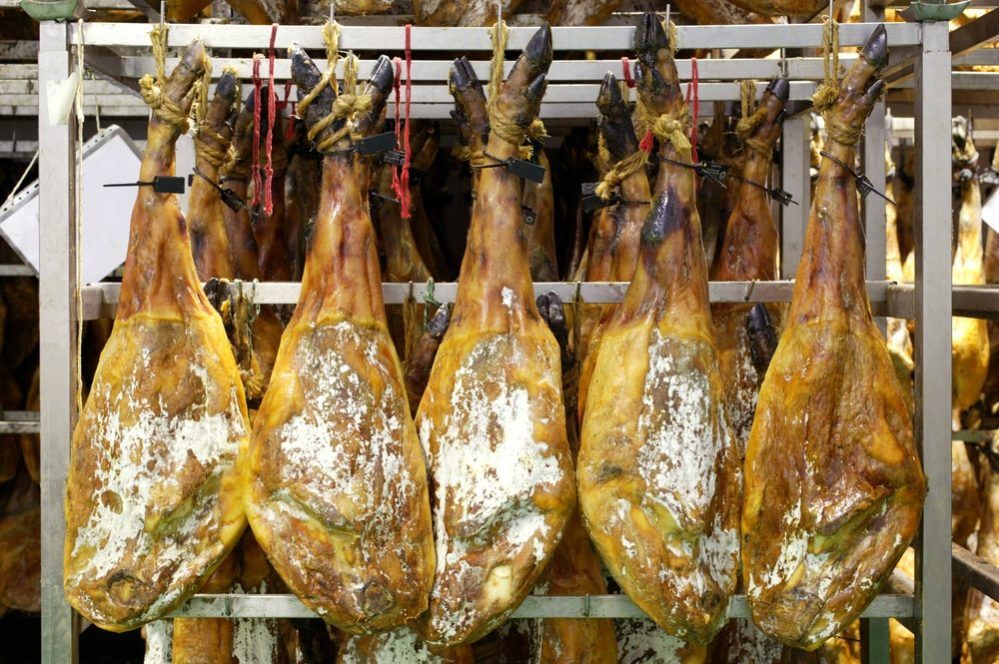
Curing
Curing encompasses the entire process of making a ham. Although it is often thought that it is only when they are in the drying phase.
This drying phase is the most decisive when it comes to curing well and giving the particularities sought in aromas. Yet the phase of maturation and aging is the final one, where the hams go on to finish curing up to a maximum of about 36 months.
The phases of curing are:
Preliminary stage
After the cutting of the extremities, they go through a process of peeling and cleaning. Afterwards, they are left for a couple of days in chambers to be tempered at 1 or 2 ºC with a relative humidity of 70%. They are then massaged to remove any residue. This process is still done manually in some places but more and more technology is incorporated to do this task. This is now very common and does not diminish the quality of the ham.
From here the cooking of the ham begins, which is just the beginning of the curing process. And it begins with:
Salting
According to the dictionary of the RAE (Real Academia Española de la Lengua) is the action of salting a food such as meat or fish for conservation.
Hams are literally buried in salt in order to partially dehydrate them, reinforce their flavour and prevent the action of bacteria. After two weeks, the hams are removed and washed with warm water to remove any remaining salt.
Before taking the ham to the drying room, there is an intermediate phase which is the post-salting, lasting between 40 and 60 days in which the hams are hung to slowly remove the surface water.
Drying
The pieces are dried in natural but automated drying rooms and the drying process continues until the pieces are “sweaty”. During the drying phase it is not necessary to touch the pieces just a little, only it is necessary to watch that there is little light, constant temperature and controlled humidity.
Any variation in these factors could have great damage in the final result. This phase runs from March to April. In the artificial drying room this is easier because conditions are created to measure and constant.
Maturation and ageing
Finally, the ham ripens in cellars. The duration of this phase will also depend on the quality and weight of the hams. The time goes from 6 to 36 months. The temperature can range between 10 and 20 degrees and humidity between 60% and 80%.
Here the master ham maker has to be very attentive to the evolution of the ham. The pieces are greased with butter especially in areas where it could spoil or dry too much and is repeated if necessary.
Here they move a lot, and they can accumulate 3 and 4 cms of mould. This is very good, as they also transmit aromas to the ham. The ham becomes then the marvellous delicacy inside and out.





